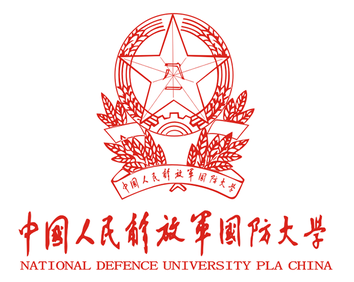“..the structure of the manual was inspired by the examples of similar manuals used by Sweden, Japan and other countries, and integrates information from various government ministries, county and city governments, and experts and scholars.”
— Liu Taiyi [劉泰益], Director of the Material Mobilization Department of the All-Out Defense Mobilization Agency
Over the past year, Taiwan took several measures based on its “All-out Defense” strategy to improve its military readiness, including by integrating reserve forces and bolstering its ability to mobilize society. The People’s Liberation Army (PLA) Eastern Theater Command’s recent joint combat exercises, aggressively conducted near Taiwan, highlighted the urgency.
In late July, shortly before the PLA exercises began, Taiwan concluded its largest annual military exercise, known as Han Kuang [漢光]. Taiwanese media coverage described it as focusing on a combination of preserving combat power in the face of a simulated missile attack, and then counter attacking. Taiwan also reportedly dispatched naval forces east of the island. According to the article, Taiwan also dispersed mobile missile units across the island. Later components of the exercise involved simulated amphibious landings to retake occupied offshore islands.
In addition to the standing force, Taiwan maintains a large reserve component which is vital to the survival of the island if war broke out and a population that supports it all. In December of last year, a new agency, the All-Out Defense Mobilization Agency [全民防衛動員署] was established. In its 2021 Report on National Defense, the Taiwanese Ministry of National Defense (MND) described the agency as intended to “integrate reserve and regular forces, combine reserve force with mobilization resources, and promote interagency cooperation, improving the strength of our reserve force in terms of its organization, force scale, career management, training, and equipping.” In March, the MND adopted a new 14-day call-up system for reservists to improve skill retention for the force, and in April it issued a handbook for citizens modeled on those used by Sweden, Japan, and others. The handbook provides explanations of how to respond in a number of scenarios including air raids, power outages, earthquakes, as well as invasion. From Taiwan’s perspective, maintaining a credible deterrent will necessarily require a regime of training and doctrine for the standing force to prepare for combat operations with a quickly mobilized reserve component and supportive citizenry: an “All-out Defense.”
Sources:
“漢光38號演習登場 海陸空戰力防護保存台東亮相” (Hanguang No. 38 exercise debuts, sea, land and air combat power protection and preservation Taitung debut), CNA (Taiwanese state media), 25 July 2022. https://www.cna.com.tw/news/aipl/202207250071.aspx
[Taiwan’s] Armed Forces’ 38th Han Guang military exercise deputed today. The main focus of the first day of the exercise was “protecting and preserving combat power.”
According to the military, the Taitung region air force will practice combat power preservation, while a second region will carry out a counterattack operation. The Taitung Army regional command (Taiping Camp area) will send armored vehicles to Chihpen Beach to counterattack [against a landing].
This morning, bases on Western Taiwan simulated a missile strike. The Air Force IDF Chingguo (FC-K1) and F-16V fighter jets sortied six times respectively. The fighter planes were loaded with weapons and landed at the Taitung Zhihang Base and entered the hardened air shelters to preserve their combat power.
Source 2:
Yu Kaixiang, “全民國防手冊範本出爐 教你如何在戰場生存”(The National Defense Handbook is a template to teach you how to survive on the battlefield), CNA (Taiwan State News Agency), 12 April 2022. https://www.cna.com.tw/news/aipl/202204120102.aspx
The Ministry of National Defense announced today the ” Model National Defense Manual “, which provides emergency response information when the people face military crises and possible disasters. Other information included in the manual is intended to help people prepare for public safety emergencies.
The Ministry of National Defense started compiling the “National Defense Manual” last year in order to strengthen the overall resilience of the population during wartime, and this morning held an online press conference to announce publication of the manual.
Liu Taiyi pointed out that the purpose of compiling the manual is to provide the public with relevant emergency response information when faced with military crises and possible disasters, so as to facilitate safety preparations and self-help for survival. For reference of the people of the age group, and design wartime scenario Q&A to guide into the live scene, separate the responsibilities of the central and local governments and the village head, and combine the actual situation of the region to allow the public to inquire about evacuation, medical care and material information.
According to Liu Taiyi, Director of the Material Mobilization Department of the All-Out Defense Mobilization Agency, the structure of the manual was inspired by the examples of similar manuals used by Sweden, Japan and other countries, and integrates information from various government ministries, county and city governments, and experts and scholars.
Source 3:
“全民國防手冊,” National Defense Handbook, Taiwan Ministry of Defense, 12 April 2022. https://www.mnd.gov.tw/NewUpload/202204/%E5%85%A8%E6%B0%91%E5%9C%8B%E9%98%B2%E6%89%8B%E5%86%8A(%E7%AF%84%E6%9C%AC)_534797.pdf

